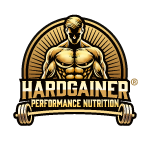RPE (Rate of Perceived Exertion)
Programming Training Autoregulation
RPE rates the perceived effort of a set (1–10). It maps directly to RIR and helps you hit the SRA window — instead of overshooting or under-stimulating.
Notice
This page provides context and guardrails. It is not individual medical, nutrition, or training advice. Suitability and tolerance are individual; for pre-existing conditions, pregnancy/lactation, or medication, consult qualified professionals before making changes.
Term and System
In short
RPE expresses how hard a set feels:
RPE 10 = absolute limit; RPE 8 = hard but clean; RPE 6 = moderate.
RPE can be pragmatically translated into RIR.
Scale & RPE↔RIR orientation
Practical orientation for set management — reference values, not dogma:
| RPE | Description | ≈ RIR |
|---|---|---|
| 10 | Maximal; no further clean rep possible | 0 |
| 9 | Very hard; ~1 clean rep “in the tank” | 1 |
| 8 | Hard, stable; prime hypertrophy zone | 2 |
| 7 | Solid work; clear reserves | 3 |
| 6 | Light to moderate; technique/volume | 4+ |
| ≤5 | Very light; warm-ups/blood flow | Many |
Calibrate RPE with video feedback and a training log (load, reps, RIR).
Practice for hardgainers
- Main sets: target
RPE 8–9(≈ RIR 1–2) — strong stimulus, technique/recovery in check. - Assistance:
RPE 7–8(≈ RIR 2–3) for clean volume. - End of block (optional): selective top set up to
RPE 9–9.5, then 1–2 back-offs (−10–20%). - Autoregulation: prescribe target RPE instead of fixed loads; tie in with SRA & NEAT.
Common mistakes
Implementation in training
- Link RPE ↔ RIR: note remaining reps per set (RIR) — makes RPE more objective.
- Double progression: hold target RPE; once you reach the top of the rep range, increase load slightly.
- Week architecture: alternate hard/light days; deload every 6–10 weeks.
- Technique anchors: consistent tempo, full ROM, strong trunk bracing; quality before load.
“You must always train to failure”
False. Targeted effort around RPE 8–9 (≈ RIR 1–2) produces repeatable stimuli with much better recovery. Failure is a tool, not a lifestyle. Learn more in the Myth Busting Series.
You do not just want to understand 1RM, RIR and volume – you want them wired into a structured plan? Then use the Hardgainer Training Plan Generator.
Hardgainer Training Plan Generator
No guesswork: setup → volume → RIR – structured, visualized, hardgainer-specific.
- Setup selection: Barbell/dumbbell, home gym or commercial gym.
- Split & frequency: Muscle-group and weekly structure in a system.
- Level: From beginner to advanced – clear guardrails.
- Volume per muscle: Sets within the MEV–MAV range.
- RIR/RPE targets: Control set difficulty per exercise.
- SFR focus: Exercise selection with a strong stimulus-to-fatigue ratio.
- CNS & fatigue gauge: Load overview at a glance.
- Weekly overview: Structured plan instead of random sets in chaos.
- Guides & glossary: Embedded in the Training Volume & Fatigue System.
Reference ranges → fine-tuning via progression, biofeedback and 4–8 week mesocycles.
FAQ
Is RPE “better” than RIR?
RPE offers finer gradation, while RIR feels more tangible.
Both work — the key is to apply one consistent system for feedback and progression.
How can I calibrate my perception?
Film 1–2 sets per week, review tempo and technique, compare with your log.
Within 3–4 weeks, accuracy improves dramatically as perception meets data.
If you have pain, injuries or medical conditions, seek medical clearance before changing training, sleep or nutrition.
Training Volume and Fatigue System – Volume, Fatigue, and Recovery at a Glance
The Training Volume and Fatigue System shows how volume (MEV, MV, MAV, MRV, Junk Volume), fatigue (SFR, RIR/RPE) and recovery (SRA, Deload) shape your programming – clear orientation guardrails, not rigid prescriptions.
Ideal as a home base when you want to structure volume cycles, plan deloads, and run progression as a programming brain instead of pure intuition – especially in a hardgainer context.
🔎 View Training Volume and Fatigue SystemFurther Reading and Resources
Core Terms
Energy & Context
Notice: Descriptive information for orientation — not a treatment, diet or training prescription. Individual differences and possible contraindications apply.
Notice
Descriptive information for orientation — not a treatment, diet or training prescription. Individual differences and possible contraindications apply.
© Hardgainer Performance Nutrition® • Glossary • Updated: Nov 25, 2025

